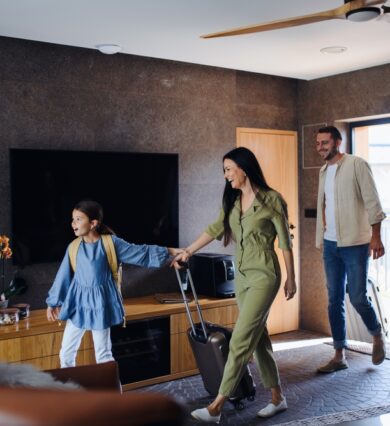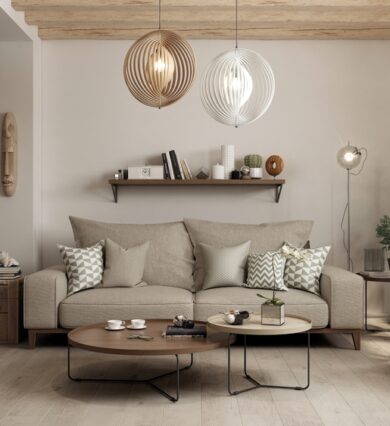Decor


Top 5 Trends in Eco-Friendly Furniture and Sustainable Decor
The push for sustainability is transforming the way we design and decorate our homes. As more consumers prioritize environmental responsibility, furniture manufacturers and decor designers are stepping up with innovative solutions that combine aesthetics and sustainability. If you’re looking to make eco-friendly choices for your home, here are the top five trends in sustainable furniture and decor that are shaping the future.
1. Reclaimed and Upcycled Materials
One of the most prominent trends in eco-friendly furniture is the use of reclaimed and upcycled materials. Learn more about reclaimed materials. Furniture crafted from salvaged wood, recycled metals, and repurposed textiles is not only eco-conscious but also uniquely beautiful. These pieces often carry a sense of history and character, making them conversation starters in any room.
For example, dining tables made from reclaimed barn wood or seating upholstered with recycled denim offer a rustic, chic aesthetic while reducing demand for new resources. The process of reclaiming materials also helps divert waste from landfills, making it a win-win for both style and the environment.
2. Modular and Multi-Functional Designs
As urban living spaces become smaller, there is a growing demand for furniture that maximizes utility without sacrificing sustainability. Modular and multi-functional furniture is a trend that caters to both needs. These pieces are designed to adapt to various configurations, allowing homeowners to reimagine their spaces as their needs change.
From sofas that transform into beds to coffee tables with hidden storage, these designs emphasize durability and efficiency. Many manufacturers are also using sustainable materials in these products, ensuring that functionality doesn’t come at the expense of the environment.
3. Non-Toxic and Natural Finishes
Health-conscious consumers are increasingly looking for furniture with non-toxic finishes and natural materials. Conventional furniture often contains harmful chemicals, such as volatile organic compounds (VOCs), which can negatively impact indoor air quality. The shift toward non-toxic, plant-based finishes and organic materials reflects a broader commitment to both health and sustainability.
Natural wood stains, water-based paints, and untreated fabrics are popular choices in this trend. Beyond being better for the planet, these materials create a soothing and inviting environment. Incorporating non-toxic finishes into your home also aligns with the growing interest in biophilic design, which seeks to foster a connection between nature and indoor spaces.
4. Circular Design and Zero-Waste Production
The concept of circular design is reshaping the furniture industry. Explore the principles of circular design. Instead of following the traditional linear model of “produce, use, discard,” circular design focuses on creating furniture that can be repaired, repurposed, or recycled at the end of its life cycle. This approach minimizes waste and encourages the responsible use of resources.
Many brands are adopting zero-waste manufacturing practices, where every scrap of material is utilized in some capacity. For instance, leftover wood from furniture production might be transformed into decorative items or smaller household goods. By supporting companies that embrace these practices, consumers can contribute to a more sustainable future.
5. Biodegradable and Plant-Based Materials
Biodegradable and plant-based materials are gaining traction in sustainable furniture design. Bamboo, cork, and rattan are some of the standout materials in this trend. These renewable resources are fast-growing, require minimal water and pesticides, and are fully biodegradable at the end of their lifecycle.
Cork, for example, is not only an excellent material for furniture but also offers soundproofing and insulation benefits. Similarly, bamboo furniture is lightweight, durable, and versatile, making it suitable for a wide range of decor styles. By choosing plant-based materials, you’re investing in furniture that leaves a minimal environmental footprint while bringing warmth and natural beauty to your space.
Embracing Sustainable Decor
In addition to furniture, sustainable decor is an essential part of creating an eco-friendly home. Accessories like organic cotton throw pillows, wool rugs, and handmade pottery can elevate your space while supporting artisans and sustainable practices. Look for decor items that are certified by eco-labels such as Fair Trade, GOTS (Global Organic Textile Standard), or FSC (Forest Stewardship Council). to ensure they meet high environmental and ethical standards.
Sustainable lighting options are also gaining popularity, with LED fixtures and solar-powered designs becoming mainstream. Find sustainable lighting options. These not only save energy but also add a contemporary touch to your interiors.
Conclusion
Choosing eco-friendly furniture and decor isn’t just a trend—it’s a lifestyle choice that reflects a commitment to the planet. By supporting sustainable practices, you’re helping to reduce waste, conserve resources, and lower greenhouse gas emissions. Moreover, investing in high-quality, eco-friendly furniture often means you’re getting durable pieces that stand the test of time, reducing the need for frequent replacements.
Whether you’re revamping an entire room or simply adding a few sustainable touches, incorporating eco-friendly furniture and decor is a powerful way to create a home that’s stylish, functional, and kind to the environment. With these top trends, you’re not only staying ahead of the curve but also making a meaningful impact for generations to come.
Visit our store or browse our online collection to find the ideal eco-friendly furniture for your space.
Join Our Newsletter
Get the Latest Sales and Promotions





